Research Highlights
Research Highlights
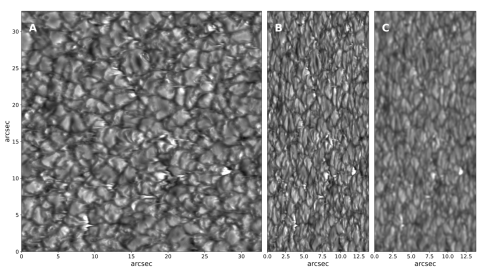
Limitations and biases in the retrieval of the polar magnetic field I: the role of the magnetic filling factor in Milne-Eddington inversions of simulated Hinode/SP data
Rebecca Centeno, Ivan Milic, Matthias Rempel, Nariaki Nitta, Xudong Sun study the extent to which Milne-Eddington inversions are able to retrieve and characterize the magnetic landscape of the solar poles from observations by the spectropolarimeter onboard Hinode. In particular, they evaluate whether a variable magnetic filling factor is an adequate modeling technique for retrieving the intrinsic magnetic properties from every pixel in the polar field of view.
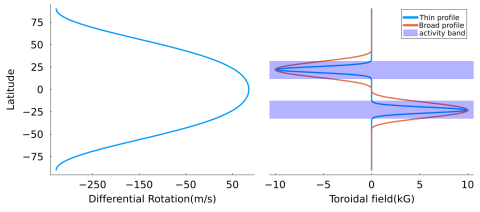
Quasi-geostrophic MHD equations: Hamiltonian formulation and nonlinear stability
Breno Raphaldini, Mausumi Dikpati, and Carlos F. M. Raupp introduce the Hamiltonian formulation for a model that reasonably describes the dynamics of large-scale flows in stars and planets. They find two kinds of invariants of the system, the Casimirs, and the zonal momentum.
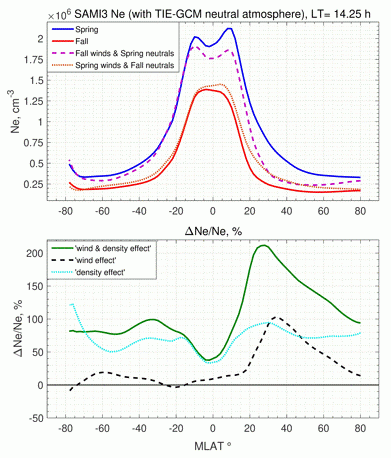
Equinoctial Asymmetry in the Upper Ionosphere: Comparison of Satellite Observations and Models
Authors L. Lomidze, D. J. Knudsen, M. Shepherd, J. D. Huba, and A. Maute observe that the terrestrial ionosphere displays significant equinoctial asymmetry despite the upper atmosphere receiving similar levels of solar ionization energy at a given location and local time in spring and fall during similar solar activity conditions. Satellite analysis data and model simulations provide better insights into the atmosphere-ionosphere coupling processes.
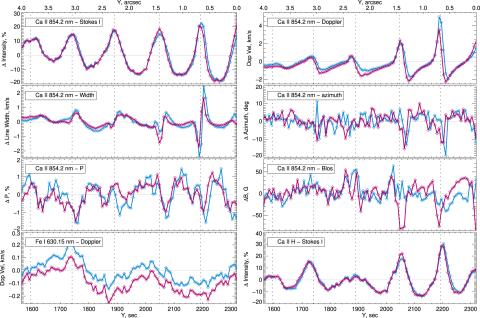
First Observation of Chromospheric Waves in a Sunspot by DKIST/ViSP
R. French, T. Bogdan, R. Casini, A. de Wijn, and P. Judge interpret the first observation by DKIST/VISP of Chromospheric Waves and observe in detail a steady umbral flash near the center of a sunspot umbra. They also find evidence for rarefaction waves situated between neighboring wave train shocks.
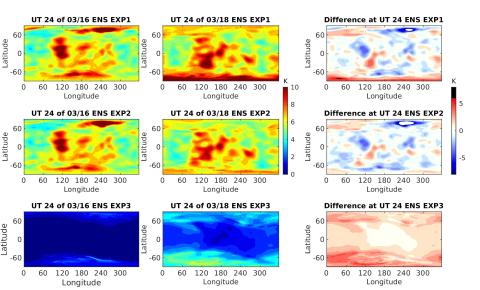
Effects of Forcing Uncertainties on the Thermospheric and Ionospheric states during geomagnetic storm and quiet periods
Understanding the sensitivity of the thermosphere and ionosphere to forcing uncertainties under different geomagnetic conditions is critical for space weather predictions. Chih-Ting Hsu and Nicholas Pedatella use WAXXM-X, with various kinds of forcing perturbation, to evaluate the upper atmosphere's response to the uncertainties of different forcings. The lower atmospheric wave and tide forcing uncertainties, and high-latitude electric potential uncertainty are addressed.
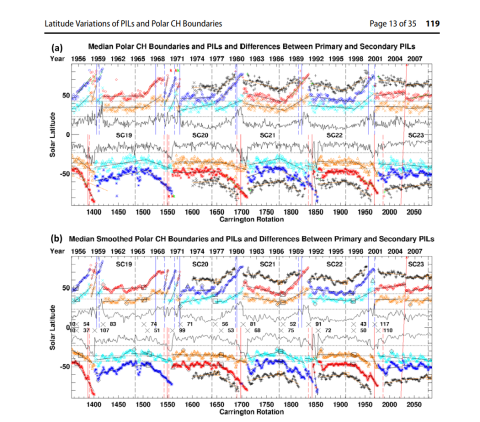
Latitude Variations in Primary and Secondary Polar Crown Polarity Inversion Lines and Polar Coronal Hole Boundaries over Five Solar Cycles
B. A. Emery, D. F. Webb, S. E. Gibson, I. M. Hewins, R. H. McFadden, and T. A. Kuchar undertake a five solar-cycle (SC 19 - 23) ≈55-year (December 1954 to August 2009) study of the high latitude polarity inversion lines (PILs) using the recently digitized McIntosh Archive (McA) of solar synoptic (Carrington) maps. They observe hemispheric differences in the "Rush to the Poles" (RttP.)

Temperature of a long-lived solar coronal cavity
Urszula Bąk-Stęślicka, Sarah E. Gibson, Marek Stęślicki analysed a long-lived coronal cavity observed from 17 March 2012 to 21 March 2012 applying a differential emission measure method to obtain both a temperature distribution and the average temperature over all five observational days.
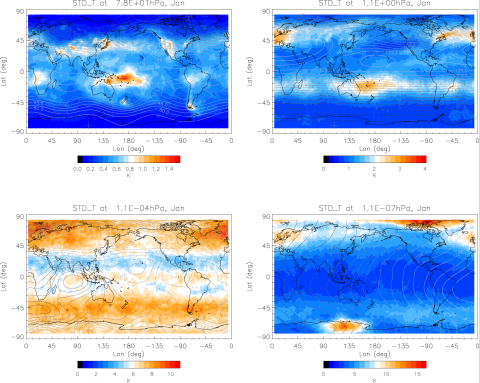
Thermospheric and Ionospheric Effects by Gravity Waves from the Lower Atmosphere
Han-Li Liu, Peter H. Lauritzen, Francis Vitt, and Steve Goldhaber have developed a high-resolution whole atmosphere model (WACCM-X), which extends from the Earth surface to the upper thermsophere, that can partially resolve the small scale waves (gravity waves.) The simulated waves are compared with available observations to verify the model results and to examine how these waves are distributed geographically and over altitudes.
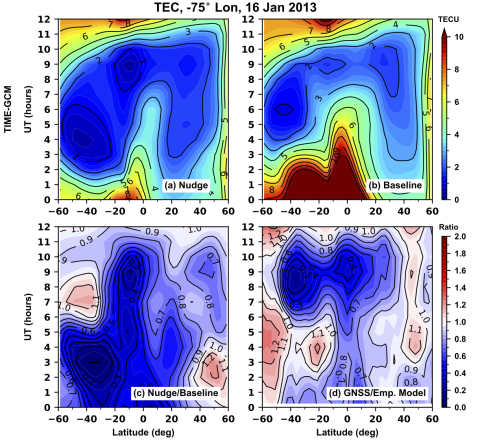
Understanding nighttime ionospheric depletions associated with sudden stratospheric warmings in the American sector
N. M. Pedatella et. al. focus on understanding what drives the previously observed deep nighttime ionospheric hole in the American sector during the January 2013 sudden stratospheric warming (SSW). Performing a set of numerical experiments with TIME-GCM they demonstrate that this nighttime ionospheric hole was the result of increased poleward and down magnetic field line plasma motion at low and midlatitudes in response to altered F-region neutral meridional winds.